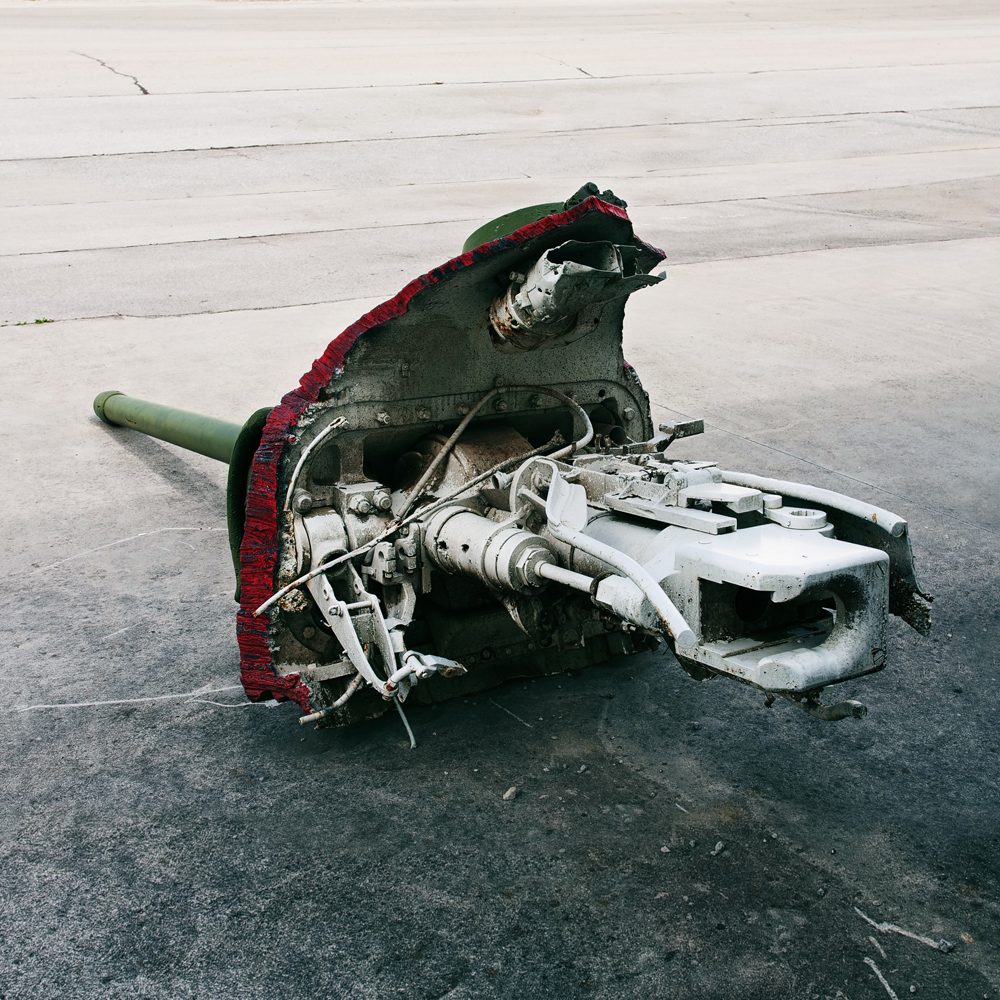Type: Medium Tank
Nation: USA
Period: World War 2
Location: The Tank Museum, Bovington, UK

The M4 Sherman’s hull had been designed to take a variety of different engine types so that the tank could be produced in enormous numbers – almost 50,000. Due to a shortage of Continental-Wright aircraft radial engines which were powering the M4 and M4A1, a 375 hp General Motors twin diesel engine was chosen for the M4A2 version, of which eventually around 10,900 units would be produced. 9,900 of them were shipped to Great Britain, the Commonwealth and the Soviet Union under Lend-Lease. Since the US Army only wanted petrol-powered vehicles to simplify logistics in theatre, they only used the M4A2 for stateside training – but the US Marine Corps gladly adopted the diesel Sherman.
After the first Shermans had distinguished themselves in the battles of 1942 and 1943, the decision was made to keep the M4 as the Allies’ standard tank for the rest of the war. Therefore in 1943/1944 an extensive upgrade programme was launched to fix some of the vehicle’s problems. The result was the second generation “large-hatch” Sherman. Besides receiving the new crew hatches, a simplified glacis plate, a 360-degree vision commander’s cupola, a loader’s hatch and improved “wet” ammunition stowage, approximately 2,900 of the second-generation M4A2s were equipped with the new 76 mm high-velocity gun. To keep crew conditions acceptable despite the bigger weapon, the turret from the abandoned T23 medium tank (which had been designed to replace the M4) was fitted on the Sherman’s hull.

This vehicle is running on the late-war horizontal volute spring suspension system which was first introduced in late 1944. The new bogies and wider 23-inch tracks effectively reduced ground pressure, although the system added some extra weight to the already heavier second-generation Sherman. The first pilot vehicles with this new suspension had been given the designation “E8” (E for experimental, 8 being the programme’s number), but when the upgrade was approved for production, it was standardised as “HVSS”. It is a common misunderstanding that these tanks were nicknamed “Easy Eight” because of their smoother driving characteristics. Initially the name came from the American spelling alphabet – where “Easy” simply stood for “E” during World War 2.

This particular vehicle was one of only five M4A2(76)W HVSS shipped to Great Britain as samples in 1945. However this type – which would have been designated as Sherman IIIAY (Sherman III = M4A2, A = 76mm gun, Y = Horizontal Volute Spring Suspension) was never adopted for service by the British Army. After the end of the Second World War the tank was used as a teaching aid at the Royal Military College of Science in Shrivenham, UK until it came to The Tank Museum in 1985.
In David Ayer’s 2014 film “Fury” it starred as the hero tank, commanded by Brad Pitt’s character. The museum had provided the production company with a number of tanks, including “Fury” and the world-famous Tiger 131. Ayer had chosen the museum’s running diesel-powered M4A2(76) for the title role because it looked very much like the ultimate Sherman in American service by 1945: The M4A3E8 with the Ford V8 petrol engine. The tank was mostly used for wide shots, while the close-ups were filmed with a mock-up vehicle and the interiors inside a cleverly built set. Michael Peña had to learn how to properly drive the tank and – according to the crew – got quite good at it. After filming, the Tank Museum decided to keep Fury in its Hollywood get-up, including the decorative gas mask ornament, stowage items and burn marks from the explosive squibs.


5 responses to “M4A2(76)W HVSS „Fury“”
[…] 131 can be seen in action in David Ayer’s 2014 film “Fury”, although the Making Of Documentary reveals that many shots had actually been achieved by using a […]
LikeLike
[…] Hellcat shared its 76.2 mm armament with the Second Generation 76 mm Sherman that came online in late summer 1944. Although this weapon fired the same projectiles as the […]
LikeLike
[…] tank with a 120 mm (which would become the M103). With its potent weapon (comparable to that of a 76 mm Sherman) and a weight of over 23 metric tons, the M41 would have easily been categorised as a medium tank […]
LikeLike
[…] German Panzer IIIs and Panzer IVs in the long-range engagements typical for North Africa. When the Sherman arrived in large numbers, the M3 was soon taken out of frontline service and delegated to so-called […]
LikeLike
[…] the improved second generation of the Sherman. The production effort was focussed on the M4A1(76)W, M4A2(76)W and the M4A3; the latter coming with three different armaments. The standard M4 was only continued […]
LikeLike